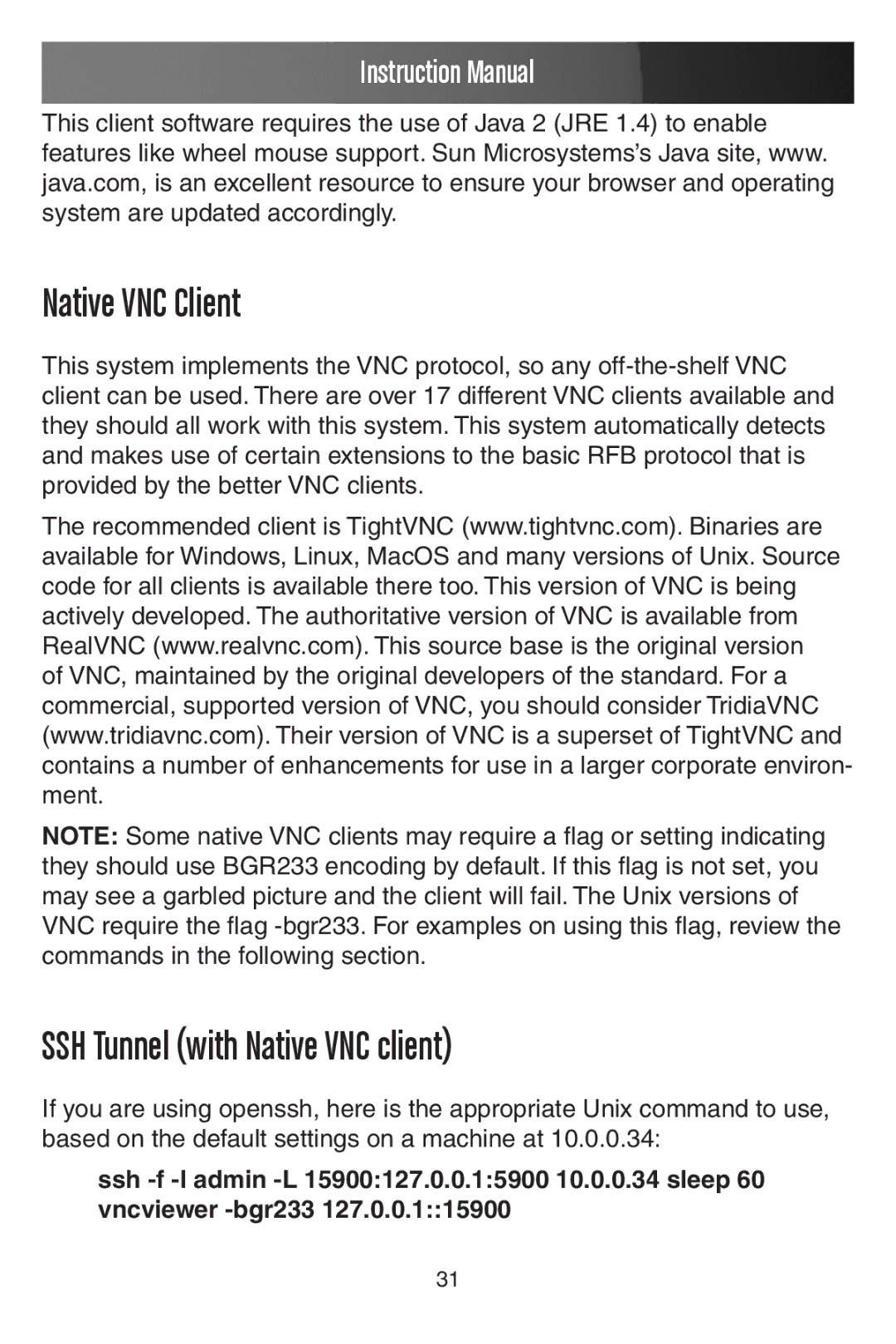Instruction Manual
This client software requires the use of Java 2 (JRE 1.4) to enable features like wheel mouse support. Sun Microsystems’s Java site, www. java.com, is an excellent resource to ensure your browser and operating system are updated accordingly.
Native VNC Client
This system implements the VNC protocol, so any
The recommended client is TightVNC (www.tightvnc.com). Binaries are available for Windows, Linux, MacOS and many versions of Unix. Source code for all clients is available there too. This version of VNC is being actively developed. The authoritative version of VNC is available from RealVNC (www.realvnc.com). This source base is the original version of VNC, maintained by the original developers of the standard. For a commercial, supported version of VNC, you should consider TridiaVNC (www.tridiavnc.com). Their version of VNC is a superset of TightVNC and contains a number of enhancements for use in a larger corporate environ- ment.
NOTE: Some native VNC clients may require a flag or setting indicating they should use BGR233 encoding by default. If this flag is not set, you may see a garbled picture and the client will fail. The Unix versions of VNC require the flag
SSH Tunnel (with Native VNC client)
If you are using openssh, here is the appropriate Unix command to use, based on the default settings on a machine at 10.0.0.34:
ssh
31
